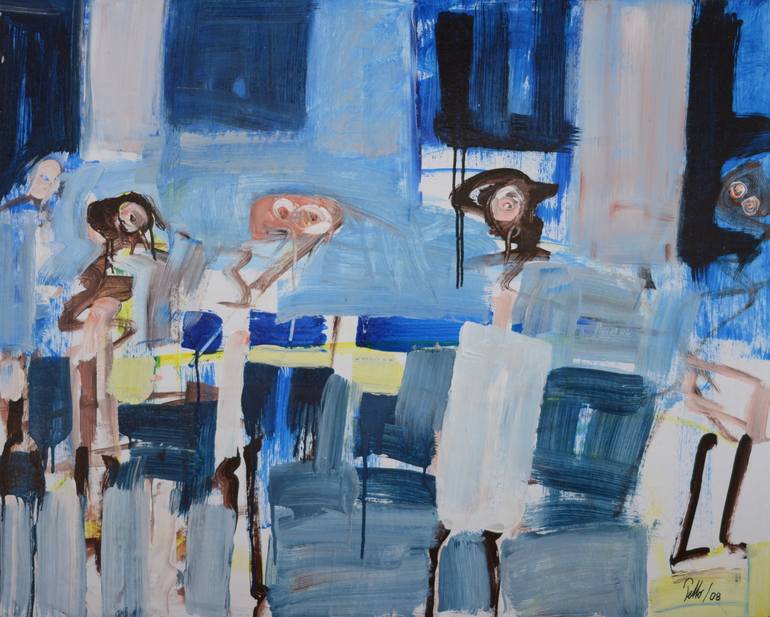
The stratification of an individual
Several years ago, I was diagnosed with an autoimmune disease. Suddenly I was a patient. And yet I usually don’t feel that way—time to put the thoughts that evoked in me back then on paper.
The opening line of Ivan Illich’s book “Medical Nemesis” is:
“Medicine has become a health threat.” According to Illich, health means the ability to cope with illness, suffering, and death independently. Illich felt that medicine affected this ability by approaching sickness, suffering, and dying too much as technical phenomena rather than human existence.
Patient
In healthcare, we call people who are ill patients. The word patient’s literal meaning comes from the Latin word Patientia, which means suffering, patience, and persistence.
The suffering can be physical and mental. The other definition is based on the use of care: A patient is someone to whom medical, paramedical, and/or nursing assistant is provided.
These definitions can apply together but also separately.
A doctor will see someone as a patient if someone comes in with a request for help. But does the person who comes in also see himself as a patient? In my opinion, this is where the basis of miscommunication arises.
Our system is designed for the second definition. Our entire claim system in healthcare is based on this.
Someone can suffer for no medically apparent reason. Is someone then a patient, or does he only become a patient if he also asks for help or intervention? Is someone suffering from life a patient? Or does he become a patient when he asks for help from a health care professional for the suffering of life?
The moment someone suffers, it can impact a person’s life that he enlists the help of a healthcare professional. This makes him a patient in both definitions.
And nowadays, we like to speak of the term “Patient-centered.” These terms are related to the systemic thinking of asking for help from a healthcare professional in which the patient is central. The person does not have to suffer for this. We also expect someone to be “patient empowered, “… .. but assigned for what if he is not suffering and therefore does not feel like a patient?
Health is an experience that can be independent of the medical diagnosis of a defect or a disease.
Patient-centered
In the 1960s, Enid Balint introduced the term “patient-centered medicine” into common parlance and associated with Michael Balint, one of the first researchers in the dynamics between doctors and patients and diseases. Michael Balint went so far as to suggest the physician himself was a therapeutic ‘drug’. At the same time, Enid Balint envisioned the skills needed in the practice of patient-centered medicine ‘in how the physician allows the patient to use it. Rather than how the physician responds to the patient through his interpretations and theories.
The question is when we conclude that you are a patient. Is that then you are until the suffering is resolved or until the moment you accept that suffering is part of your life?
Healthcare has a lot of miscommunication due to terms with different perceptions, definitions, and imposed perspectives. A person can feel like a patient when there are no medical reasons for using this definition, and a doctor can call someone a patient who does not feel like a patient.
The term patient implies expectations, assumptions, and communication that cannot occur if there is no consensus about the perspective from which it is being spoken and why it is used by those involved.
What if the person asking for help is not suffering but wants preventive attention, or if you have to return to the hospital for a treatment check-up? This person will no longer suffer, but the system will see him as a patient because you are using a healthcare professional.
It is interesting to think about when people start using the term patient and that healthcare as an institution seems to link this to whether or not to use treatments for health, where people seem to use this as a definition of suffering.
When people are not suffering, they very often do not call themselves a patient.
Diabetes patient uses treatment to regulate their glucose level and not suffer physically. Still, as long as that goes well, few diabetes patients call themselves diabetes patients. It is much more often said: I have diabetes.
We only call ourselves patients when our daily desired functioning is disrupted and we experience a form of suffering, such as pain, grief, or misery.
So people associate being a patient with suffering, but healthcare associates being a patient with the use of health, preventive, or curative treatments.
Patient-centered means that we focus on suffering from the ill person’s perspective. In doing so, we ignore the stratification of the individual and the forces and other roles of a person’s life.
Identity
Paul Verhaeghe’s book “Identity” contains this definition:
Identity is “the individual’s cognitive, behavioral, and affective repertoire regarding who she or he is, to which groups he or she belongs, and behaviors enacted as a result of these thoughts and beliefs”.
This definition illustrates that identity has a layering. It concerns behavioral, cognitive, and emotional processes. Identity is thus a way of describing myself, but more importantly, my identity takes shape in interaction with the environment.
The Other
And that brings me to the philosopher Emmanuel Levinas. He states:
“Who you are is partly determined by the Other.”
Conversely, you also influence the Other by perceiving who the Other is. You reduce the identity of the Other by the labels you put on them.
Stratification
And I understand that we do, but I also regret it. Of course, it helps us to understand the world around us. That world is so complicated. With the enormous amount of information we have to process daily, we try to organize it that way. But by putting a label on someone: patient, woman, prisoner, disabled person, etc., you reduce someone to that label and ignore the stratification of that individual.
Painting: Entirely in Medical Hands
Franz Petto




